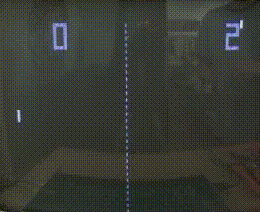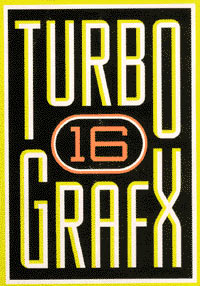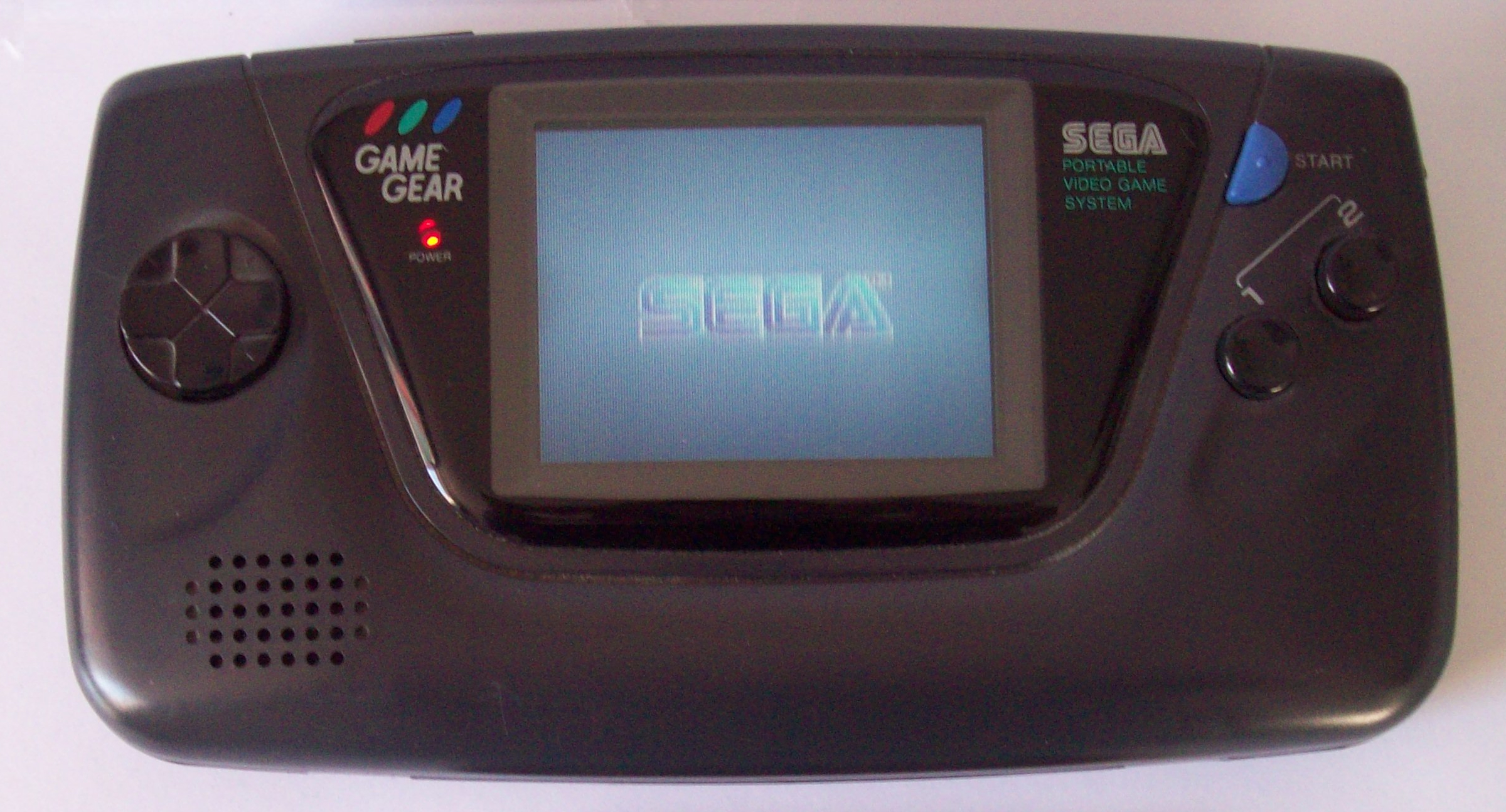|
Off The Wall (1991 Video Game)
''Off the Wall'' is an arcade game produced by Atari Games and released in North America in 1991. A remake of '' Breakout'', it has a much wider variety of gameplay elements of the original. Most notably, it models spin on the ball. ''Off the Wall'' supports up to three players simultaneously (though most cabinets only support two). The game's graphics include many backgrounds modeled after modern abstract art Abstract art uses visual language of shape, form, color and line to create a composition which may exist with a degree of independence from visual references in the world. Western art had been, from the Renaissance up to the middle of the 19th .... Gameplay The objective of ''Off the Wall'' is to score as many points as possible by destroying square blocks in a never-ending series of levels. The player controls a paddle using an analog knob or a joystick (depending on the machine configuration). The paddle moves along one edge of the playfield, and a ball flies aro ... [...More Info...] [...Related Items...] OR: [Wikipedia] [Google] [Baidu] |
Atari Games
Atari Games Corporation, known as Midway Games West Inc. after 1999, was an American producer of Arcade game, arcade Video game, games. It was formed in 1985 when the coin-operated Arcade game, arcade game division of Atari, Inc. was transfered by Warner Communications to a joint venture with Namco. It was one of several successor companies to use the name Atari. The company developed and published games for arcades and across consumer gaming consoles such as the Commodore 16, Commodore 64, Game Boy, Nintendo Entertainment System (NES) and other platforms using the Tengen (company), Tengen label. Some of the games Atari had developed include ''Tetris (Atari), Tetris, Road Runner (video game), Road Runner, RoadBlasters'' and ''Primal Rage.'' After Time Warner reassumed full ownership in 1994, the company was sold to WMS Industries in 1996, and became part of Midway Games when that company was spun-off by WMS in 1998. It ceased operations in 2003 and its former assets were sold bac ... [...More Info...] [...Related Items...] OR: [Wikipedia] [Google] [Baidu] |
Breakout Clone
''Breakout'' is an arcade video game developed and published by Atari, Inc. and released on May 13, 1976. It was designed by Steve Wozniak, based on conceptualization from Nolan Bushnell and Steve Bristow who were influenced by the seminal 1972 Atari arcade game ''Pong''. In ''Breakout'', a layer of bricks lines the top third of the screen and the goal is to destroy them all by repeatedly bouncing a ball off a paddle into them. The arcade game was released in Japan by Namco. ''Breakout'' was a worldwide commercial success, among the top five highest-grossing arcade video games of 1976 in both the United States and Japan and then among the top three highest-grossing arcade video games of 1977 in the US and Japan. The 1978 Atari VCS port uses color graphics instead of a monochrome screen with colored overlay. While the concept was predated by Ramtek's ''Clean Sweep'' (1974), ''Breakout'' spawned an entire genre of clones. It was the inspiration for aspects of the Apple II compu ... [...More Info...] [...Related Items...] OR: [Wikipedia] [Google] [Baidu] |
Arcade Game
An arcade game or coin-op game is a coin-operated entertainment machine typically installed in public businesses such as restaurants, bars and amusement arcades. Most arcade games are presented as primarily games of skill and include arcade video games, Pinball machines, electro-mechanical games, redemption games or merchandisers. Types Broadly, arcade games are nearly always considered games of skill, with only some elements of games of chance. Games that are solely games of chance, like slot machines and pachinko, often are categorized legally as gambling devices and, due to restrictions, may not be made available to minors or without appropriate oversight in many jurisdictions. Arcade video games Arcade video games were first introduced in the early 1970s, with ''Pong'' as the first commercially successful game. Arcade video games use electronic or computerized circuitry to take input from the player and translate that to an electronic display such as a monitor or telev ... [...More Info...] [...Related Items...] OR: [Wikipedia] [Google] [Baidu] |
Breakout (video Game)
''Breakout'' is an arcade video game developed and published by Atari, Inc. and released on May 13, 1976. It was designed by Steve Wozniak, based on conceptualization from Nolan Bushnell and Steve Bristow who were influenced by the seminal 1972 in video games, 1972 Atari arcade game ''Pong''. In ''Breakout'', a layer of bricks lines the top third of the screen and the goal is to destroy them all by repeatedly bouncing a ball off a paddle into them. The arcade game was released in Japan by Namco. ''Breakout'' was a worldwide commercial success, among the top five highest-grossing 1976 in video games, arcade video games of 1976 in both the United States and Japan and then among the top three highest-grossing 1977 in video games, arcade video games of 1977 in the US and Japan. The 1978 Atari 2600, Atari VCS port uses color graphics instead of a monochrome screen with colored overlay. While the concept was predated by Ramtek (company), Ramtek's ''Clean Sweep'' (1974), ''Breakout'' sp ... [...More Info...] [...Related Items...] OR: [Wikipedia] [Google] [Baidu] |
Abstract Art
Abstract art uses visual language of shape, form, color and line to create a composition which may exist with a degree of independence from visual references in the world. Western art had been, from the Renaissance up to the middle of the 19th century, underpinned by the logic of perspective and an attempt to reproduce an illusion of visible reality. By the end of the 19th century many artists felt a need to create a new kind of art which would encompass the fundamental changes taking place in technology, science and philosophy. The sources from which individual artists drew their theoretical arguments were diverse, and reflected the social and intellectual preoccupations in all areas of Western culture at that time. Abstract art, non-figurative art, non-objective art, and non-representational art are all closely related terms. They have similar, but perhaps not identical, meanings. Abstraction indicates a departure from reality in depiction of imagery in art. This departure ... [...More Info...] [...Related Items...] OR: [Wikipedia] [Google] [Baidu] |
Pong
''Pong'' is a table tennis–themed twitch arcade sports video game, featuring simple two-dimensional graphics, manufactured by Atari and originally released in 1972. It was one of the earliest arcade video games; it was created by Allan Alcorn as a training exercise assigned to him by Atari co-founder Nolan Bushnell, but Bushnell and Atari co-founder Ted Dabney were surprised by the quality of Alcorn's work and decided to manufacture the game. Bushnell based the game's concept on an electronic ping-pong game included in the Magnavox Odyssey, the first home video game console. In response, Magnavox later sued Atari for patent infringement. ''Pong'' was the first commercially successful video game, and it helped to establish the video game industry along with the Magnavox Odyssey. Soon after its release, several companies began producing games that closely mimicked its gameplay. Eventually, Atari's competitors released new types of video games that deviated from ''Pong'''s origi ... [...More Info...] [...Related Items...] OR: [Wikipedia] [Google] [Baidu] |
TurboGrafx-16
The TurboGrafx-16, known as the outside North America, is a home video game console designed by Hudson Soft and sold by NEC, NEC Home Electronics. It was the first console marketed in the fourth generation of video game consoles, fourth generation, commonly known as the 16-bit era, though the console has an 8-bit central processing unit (CPU) coupled with a 16-bit graphics processor. It was released in Japan in 1987 and in North America in 1989. In Europe, the console is known as the PC Engine, after the Japanese model was imported and distributed in the United Kingdom and France from 1988. In Japan, the system was launched as a competitor to the Nintendo Entertainment System, Famicom, but the delayed United States release meant that it ended up competing with the Sega Genesis and later the Super Nintendo Entertainment System, Super NES. The console has an 8-bit CPU and a dual 16-bit graphics processing unit (GPU) chipset consisting of a video display controller (VDC) and video ... [...More Info...] [...Related Items...] OR: [Wikipedia] [Google] [Baidu] |
Game Gear
The is an 8-bit fourth generation handheld game console released by Sega on October 6, 1990, in Japan, in April 1991 throughout North America and Europe, and during 1992 in Australia. The Game Gear primarily competed with Nintendo's Game Boy, the Atari Lynx, and NEC's TurboExpress. It shares much of its hardware with the Master System, and can play Master System games by the use of an adapter. Sega positioned the Game Gear, which had a full-color backlit screen with a landscape format, as a technologically superior handheld to the Game Boy. Though the Game Gear was rushed to market, its unique game library and price point gave it an edge over the Atari Lynx and TurboExpress. However, due to its short battery life, lack of original games, and weak support from Sega, the Game Gear was unable to surpass the Game Boy, selling 10.62 million units by March 1996. The Game Gear was discontinued in 1997. It was re-released as a budget system by Majesco Entertainment in 2000, under li ... [...More Info...] [...Related Items...] OR: [Wikipedia] [Google] [Baidu] |
1991 Video Games
File:1991 Events Collage.png, From left, clockwise: Boris Yeltsin, 1991 Russian presidential election, elected as Russia's first President of Russia, president, waves the new flag of Russia after the 1991 Soviet coup d'état attempt, orchestrated by Soviet Union, Soviet hardliners; Mount Pinatubo 1991 eruption of Mount Pinatubo, erupts in the Philippines, making it the List of large historical volcanic eruptions, second-largest Types of volcanic eruptions, volcanic eruption of the 20th century; MTS Oceanos sinks off the coast of South Africa, but the crew notoriously abandons the vessel before the passengers are rescued; Dissolution of the Soviet Union: The Flag of the Soviet Union, Soviet flag is lowered from the Kremlin for the last time and replaced with the flag of the Russian Federation; The United States and soon-to-be dissolved Soviet Union sign the START I Treaty; A tropical cyclone 1991 Bangladesh cyclone, strikes Bangladesh, killing nearly 140,000 people; Lauda Air Flight ... [...More Info...] [...Related Items...] OR: [Wikipedia] [Google] [Baidu] |
Arcade Video Games
Arcade most often refers to: * Arcade game, a coin-operated game machine ** Arcade cabinet, housing which holds an arcade game's hardware ** Arcade system board, a standardized printed circuit board * Amusement arcade, a place with arcade games * Arcade (architecture), a series of adjoining arches * Shopping mall, one or more buildings forming a complex of shops, also sometimes called a shopping arcade Arcade or The Arcade may also refer to: Places Greece *Arcades (Crete), a town and city-state of ancient Crete, Greece Italy * Arcade, Italy, a town and commune in the region of Veneto United States * Arcade Building (Asheville, North Carolina) * Arden-Arcade, California * Arcade, Georgia, a city in Jackson County * Arcade (village), New York * Arcade (town), New York * The Arcade (Oak Bluffs, Massachusetts), a historic site in Oak Bluffs, Massachusetts * The Arcade (Providence, Rhode Island), a historic shopping center * Arcade, Texas Arts and entertainment Books an ... [...More Info...] [...Related Items...] OR: [Wikipedia] [Google] [Baidu] |
Atari Arcade Games
Atari () is a brand name that has been owned by several entities since its inception in 1972. It is currently owned by French publisher Atari SA through a subsidiary named Atari Interactive. The original Atari, Inc., founded in Sunnyvale, California, in 1972 by Nolan Bushnell and Ted Dabney, was a pioneer in arcade games, home video game consoles and home computers. The company's products, such as ''Pong'' and the Atari 2600, helped define the electronic entertainment industry from the 1970s to the mid-1980s. In 1984, as a result of the video game crash of 1983, the home console and computer divisions of the original Atari Inc. were sold off, and the company was renamed Atari Games Inc. Atari Games received the rights to use the logo and brand name with appended text "Games" on arcade games, as well as the derivative coin-operated arcade rights to the original 1972–1984 arcade hardware properties. The Atari Consumer Electronics Division properties were in turn sold to Jack ... [...More Info...] [...Related Items...] OR: [Wikipedia] [Google] [Baidu] |






